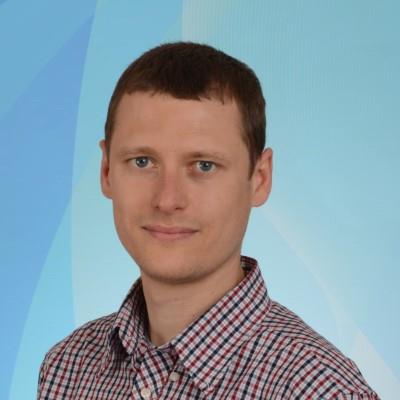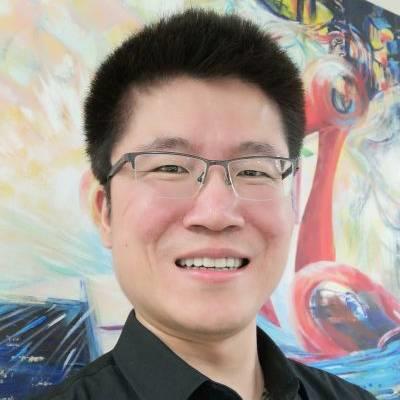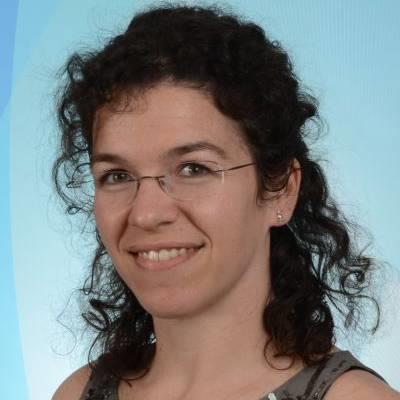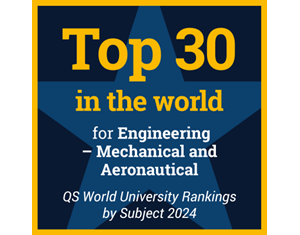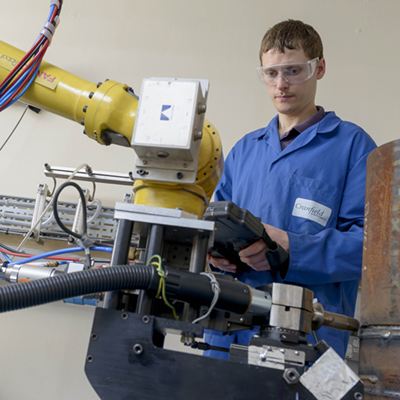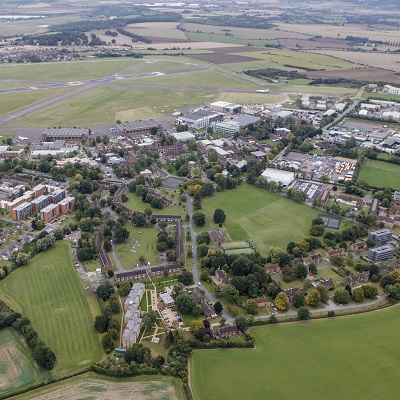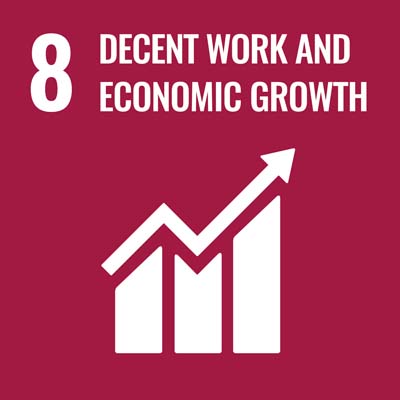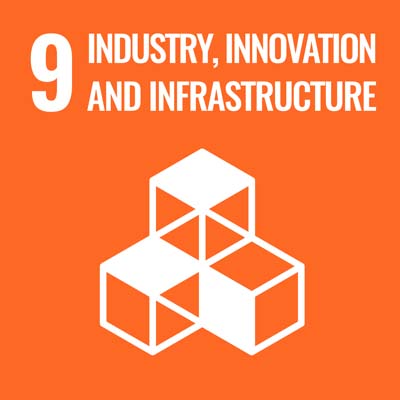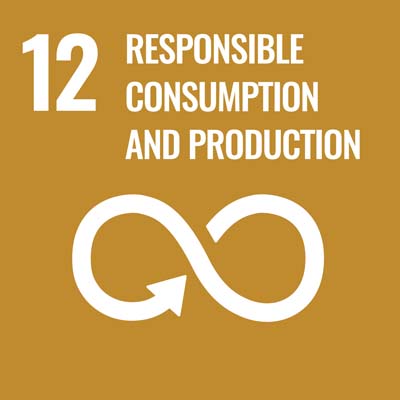Overview
- Start dateFull-time: October, part-time: throughout the year
- DurationOne year full-time, two-five years part-time
- DeliveryTaught modules 40%, Group projects 20%, Individual project 40%
- QualificationMSc, PgDip, PgCert
- Study typeFull-time / Part-time
- CampusCranfield campus
Who is it for?
Early career professionals
- Our students hold degrees in a relevant science or engineering discipline and are keen to pursue a career in an advanced manufacturing sector using welding and joining technologies. You will join an elite group of welding professionals.
Experienced professionals
- We welcome experienced and established professionals who are looking to learn about the latest advancements in welding technologies and refresh their knowledge. We offer flexible schedules through full and part time modes of study.
Why this course?
Welding offers rewarding and meaningful career in advanced manufacturing sectors, ranging from the building of advanced boats and vehicles, to high-precision joining of functional components for e-mobility, aerospace, medical and nuclear applications, amongst others.
The Centre is internationally leading in wire and arc additive manufacturing and as a student you will have the opportunity to develop skills and knowledge encompassing these fields of manufacturing. With well-equipped facilities, you will gain access to the latest arc and laser based robotic welding systems with associated instrumentation for characterising and quantifying a process. Our lab is situated over 700m2 of space, which allows industrial level work with our partners.
All our projects are industrially linked and usually involve innovative developments never before undertaken. You will have the opportunity to be supervised by a world leading academic in the area. We aim to develop well-rounded, career-ready graduates by supporting the development of communication, presentation, analytical and problem solving skills.
As a Cranfield University student you will benefit from:
- Studying in a postgraduate-only environment, conducive to developing industry-ready, professional skills and behaviour.
- Equal opportunities provided to all our learners.
- Being taught by leading academics as well as industrial practitioners, supplemented by industrial visits.
- Working alongside a strong research team.
- Dedicated support for off-campus learners including extensive information resources managed by Cranfield University's library.
- Consultancy to companies supporting their employees on part-time programmes, in relation to individual projects.
- Support in securing positions in full-time employment in your chosen field, or to undertake academic research.
In addition, you will be qualified to act as responsible persons as defined by International Welding Engineering Standards, and we meet a major part of the requirements for membership of the appropriate professional engineering institutes with knowledge, skills and experience of managing research and development projects.
Informed by Industry
The MSc benefits from strong industry connections in many ways, from being designed and developed to continually meet employers' needs, to providing students the opportunity to work on real-life industry problems. The Welding Engineering MSc is guided by leading industrial experts who constitute the industrial advisory board for the course.
Some organisations that we regularly work with and can be mentioned are:
| Airbus, | BAE Systems, |
| FMC Technip, | GE, |
| Bombardier, | Esab, |
| Lincoln Electric, | Subsea7, |
| Proclad, | Babcock International, |
| Rolls Royce, | Metalcraft, |
| Langfields, | Fronius, |
| Trumpf Ltd. |
Course details
The course comprises seven assessed modules, a group project and an individual research project. The modules include lectures and tutorials, and are assessed through practical work, written examinations, case studies, essays, presentations and tests. These provide the 'tools' required for the group and individual projects.
Course delivery
Taught modules 40%, Group projects 20%, Individual project 40%
Group project
The group project experience is highly valued by both students and prospective employers. Teams of students work to solve an industrial problem. The project applies technical knowledge and provides training in teamwork and the opportunity to develop non-technical aspects of the taught programme. Part-time students can prepare a dissertation on an agreed topic in place of the group project.
Industrially orientated, our team projects have support from external organisations. As a result of external engagement Cranfield students enjoy a higher degree of success when it comes to securing employment. Prospective employers value the student experience where team working to find solutions to industrially based problems are concerned.
Individual project
This provides experience of undertaking research into a specific welding or Wire + Arc Additive Manufacture (WAAM) topic that is of interest and benefit to industry. For full-time students the project is performed using our state-of-the-art welding and WAAM equipment in the Welding Engineering and Laser Processing Centre. In some cases, it may be possible to undertake the research project with an industry sponsor at their premises. For part-time students, the research project is usually performed at their employer's premises.
Modules
Keeping our courses up-to-date and current requires constant innovation and change. The modules we offer reflect the needs of business and industry and the research interests of our staff and, as a result, may change or be withdrawn due to research developments, legislation changes or for a variety of other reasons. Changes may also be designed to improve the student learning experience or to respond to feedback from students, external examiners, accreditation bodies and industrial advisory panels.
To give you a taster, we have listed the compulsory and elective (where applicable) modules which are currently affiliated with this course. All modules are indicative only, and may be subject to change for your year of entry.
Course modules
Compulsory modules
All the modules in the following list need to be taken as part of this course.
Welding Processes and Equipment
| Aim |
|
|---|---|
| Syllabus |
|
| Intended learning outcomes |
On successful completion of this module you should be able to:
|
Welding Systems and Research Methods
| Aim |
This module will enable you to gain an understanding of the physical principles and operating characteristics of selected welding processes, and of automated welding and welding sensors. The module is also intended to develop your skills in communication, project management, and research methods. |
|---|---|
| Syllabus |
• Welding sensors and data acquisition • Welding process optimisation • Principles of robotic welding • Welding software • Critical evaluation of literature • Design and analysis of experiments • Evaluation and industrial implementation of research data • Welding laboratory • Economics of weld fabrication • Plant facilities, welding jigs and fixtures • Project Planning |
| Intended learning outcomes |
On successful completion of this module you should be able to: 1. Appraise the different methods for sensing a weld seam and the different robotic welding systems through critical review of academic and industrial literature. 2. Design a programme of experiments for performing a fillet weld to test the effect of the main input parameters. 3. Analyse data produced from these experiments so that the relationship between process inputs and outputs is understood. 4. Design a robotic welding cell within a factory that includes fixturing and sensing of the part, equipment for loading and unloading, labour requirements and an estimation of the time to manufacture. 5. Construct a project plan for the installation of robotic welding system and calculate the cost of a typical robotic welding operation including labour costs, overhead costs, and consumable costs. Compare this with the cost of manually welding the part and determine the return on investment. |
Design of Welded Structures
| Aim |
The aim of this module is to provide you with an understanding of the fundamentals of strength of materials and its application to weldments, and to appreciate the factors involved in design and performance of welded structures. |
|---|---|
| Syllabus |
|
| Intended learning outcomes |
On successful completion of this module you should be able to:
|
Welding Metallurgy
| Aim |
The aim of this module is to provide you with an understanding of the microstructures and metallurgical characteristics of welded joints in ferrous and non-ferrous alloys, formation of weld defects and how the metal and heat source interaction affects microstructure and strengthening behaviour of different alloys. Within this module the factors which lead to weld defects are explained alongside joining and repair of ferrous and non-ferrous cast alloys, repair and cladding of structures subjected to wear and joining of coated steel. |
|---|---|
| Syllabus |
• Welding of Stainless Steels • Joining materials for low and high temperature applications • Welding of aluminium, copper, and other non-ferrous alloys • Joining of coated steels • Welding of castings – cast steel and cast iron • Joining of dissimilar metals • Wear and Protective Layers • Fundamentals of corrosion |
| Intended learning outcomes |
On successful completion of this module a student should be able to: 1. Appraise the evolution of microstructure and principles of formation of metallurgical phases due to welding of a wide range of ferrous and non-ferrous alloys. 2. Evaluate the metallurgical characteristics of a wide range of structural ferrous and non-ferrous alloys and techniques and processes suitable for welding of them. 3. Appraise physical metallurgy principles to assess the response of ferrous and non-ferrous alloys and their dissimilar combinations to welding and assess how to take necessary precautions during welding to avoid formation of unwanted phases. 4. Evaluate the physical principles and types of wear and describe how cladding and other surface coating processes can be a useful tool to retard wear. 5. Evaluate the principles of metal corrosion, cladding and joining principles of cladded structures. |
Introduction to Materials for Welding Engineering
| Aim |
The aim of this module is to enable you to to analyse the structure and properties of materials, to relate fabrication processes with structure and properties, assess how this determines materials properties, and apply this knowledge to materials in applications. |
|---|---|
| Syllabus |
• Basic and alloy steels, tensile behaviour of metals, work and precipitation hardening, recovery and recrystallisation. • Structural steels - C-Mn ferrite-pearlite structural steels, specifications and influence of composition, heat treatment and microstructure on mechanical properties. Fracture, weldability and the influence of welding on mechanical properties. • Corrosion Resistant Materials - Stainless steels - austenitic, ferritic, martensitic and duplex stainless steels- compositions, microstructures, properties. Materials for offshore structures. • Welding and joining processes, weld metal, heat affected zones and weld cracking. • Non-metallic Materials - Polymers and composites manufacturing issues, physical properties and mechanical behaviour. |
| Intended learning outcomes |
On successful completion of this module a student should be able to: 1. Understand the basic principles of material structures on a micro and macro scale, and be able to relate microstructure to mechanical performance. 2. Explain how the chemical composition, microstructure and processing route for steels and non-ferrous alloys influence the resulting mechanical properties. 3. Identify and apply methodologies for the selection of specific materials (steels, stainless steels, polymers, composites, and corrosion resistant alloys) for different applications. 4. Be able to relate fracture, corrosion and welding behaviour to particular alloys. 5. Be able to select appropriate manufacturing processes for composites and ceramics. 6. Be able to understand the response of structural steels to heat during fabrication and the resulting changes in metallurgical structure and mechanical property. |
Management of Weld Quality
| Aim |
The aim of this module is to provide you with an understanding of the fundamentals of quality management related to welding fabrication, including quality systems and non-destructive examination, and to provide you with the knowledge to manage health and safety in welding. |
|---|---|
| Syllabus |
• Introduction to quality assurance • Weld quality standards – IS0 9000 and ISO 3834 • Quality control during manufacture – weld procedure specification and qualification • Welder qualification • Introduction to Non-destructive examination (NDE) and types of weld imperfections • Fundamentals of NDE methods (dye penetrant, magnetic particle, eddy current, acoustic emission, radiographic inspection) • Ultrasonic Inspection |
| Intended learning outcomes |
On successful completion of this module you should be able to: 1. Evaluate the principles of quality management. 2. Appraise the relationship between standards, and use standards to achieve required weld quality. 3. Specify, qualify and operate weld procedures to appropriate standards. 4. Distinguish appropriate NDE techniques for welded fabrications and examine and interpret NDE examinations. 5. Manage workplace practices to ensure adequate health and safety. |
Advanced Welding Processes
| Aim |
|
|---|---|
| Syllabus |
• Laser welding including micro-welding and hybrid processes • Introduction to laser processing • Laser material interactions • Laser powder melting • Laser wire melting • Laser sources, optics and fibre optics • Advanced arc welding processes • Solid state welding processes • Friction welding • Additive manufacture • Advanced resistance welding • Dissimilar material welding • Remote underwater welding • Weld metal engineering • Electron beam welding • Process monitoring • Other laser processes (e.g. laser peening) • Material characteristics and response to laser • Weld metal engineering • Laser safety |
| Intended learning outcomes |
On successful completion of this module a student should be able to: 1. Evaluate and compare the physical principles behind the operation of the advanced welding and processing methods e.g. laser, advanced gas metal arc processes, friction based techniques etc. 2. Select the most appropriate welding system for a particular application and analyse the economic benefits. 3. Examine physical and engineering principles behind selective applications for welding processes and critique methods for maximising process efficiency. 4. Appraise recent developments in welding technology and identify where these new processes can be used. |
Teaching team
The Course Director for this programme is Dr Wojciech Suder.
Accreditation
The Welding Engineering MSc is accredited by the Institution of Mechanical Engineers (IMechE), the Royal Aeronautical Society (RAeS), The Welding Institute (TWI), Institute of Materials, Minerals & Mining (IOM3) and Institution of Engineering & Technology (IET) on behalf of the Engineering Council as meeting the requirements for further learning for registration as a Chartered Engineer (CEng).
Candidates must hold a CEng accredited BEng/BSc (Hons) undergraduate first degree to show that they have satisfied the educational base for CEng registration.
Please note accreditation applies to the MSc award, PgDip and PgCert (if offered) do not meet in full the further learning requirements for registration as a Chartered Engineer.
Your career
Successful students develop diverse and rewarding careers in industry and in research. In industry as a welding professional your role would include engineering management in a wide-range of organisations, deploying cutting-edge welding technologies. Roles include the management of welding manufacturing operations, and management of design and fabrication of welded structures. The international nature of such activities means that you have a global career opportunity and will be part of our global alumni family.
Alternatively, in research you may pursue doctoral study and subsequently move to academia and research.
Students have gone on to hold positions including:
| Welding Engineer, |
| Welding Manager, |
| Technical Manager, |
| Responsible Welding Coordinator. |
Sectors that hire our graduates include:
| Energy, |
| Aerospace, |
| Civil and construction, |
| Automotive and transport. |
Cranfield’s Career Service is dedicated to helping you meet your career aspirations. You will have access to career coaching and advice, CV development, interview practice, access to hundreds of available jobs via our Symplicity platform and opportunities to meet recruiting employers at our careers fairs. Our strong reputation and links with potential employers provide you with outstanding opportunities to secure interesting jobs and develop successful careers. Support continues after graduation and as a Cranfield alumnus, you have free life-long access to a range of career resources to help you continue your education and enhance your career.
Part-time route
We welcome students looking to enhance their career prospects whilst continuing in full-time employment. The part-time study option that we offer is designed to provide a manageable balance that allows you to continue employment with minimal disruption whilst also benefiting from the full breadth of learning opportunities and facilities available to all students. The University is very well located for visiting part-time students from all over the world and offers a range of library and support facilities to support your studies. Students with IWE/EWE qualification would be entitled to receive credits for their prior learning. As a part-time student you will be required to attend teaching on campus in one-week blocks, for a total of 3 modules over the 2-3 year period that you are with us. Teaching blocks are typically run during the period from October to January, followed by independent study and project work. MSc students will commence their studies in the October.
Master by Research is an alternative to achieve Master’s degree by doing a 1-year intensive research (2-years for part time option) and can commence either in October or January.
How to apply
Click on the ‘Apply now’ button below to start your online application.
See our Application guide for information on our application process and entry requirements.
